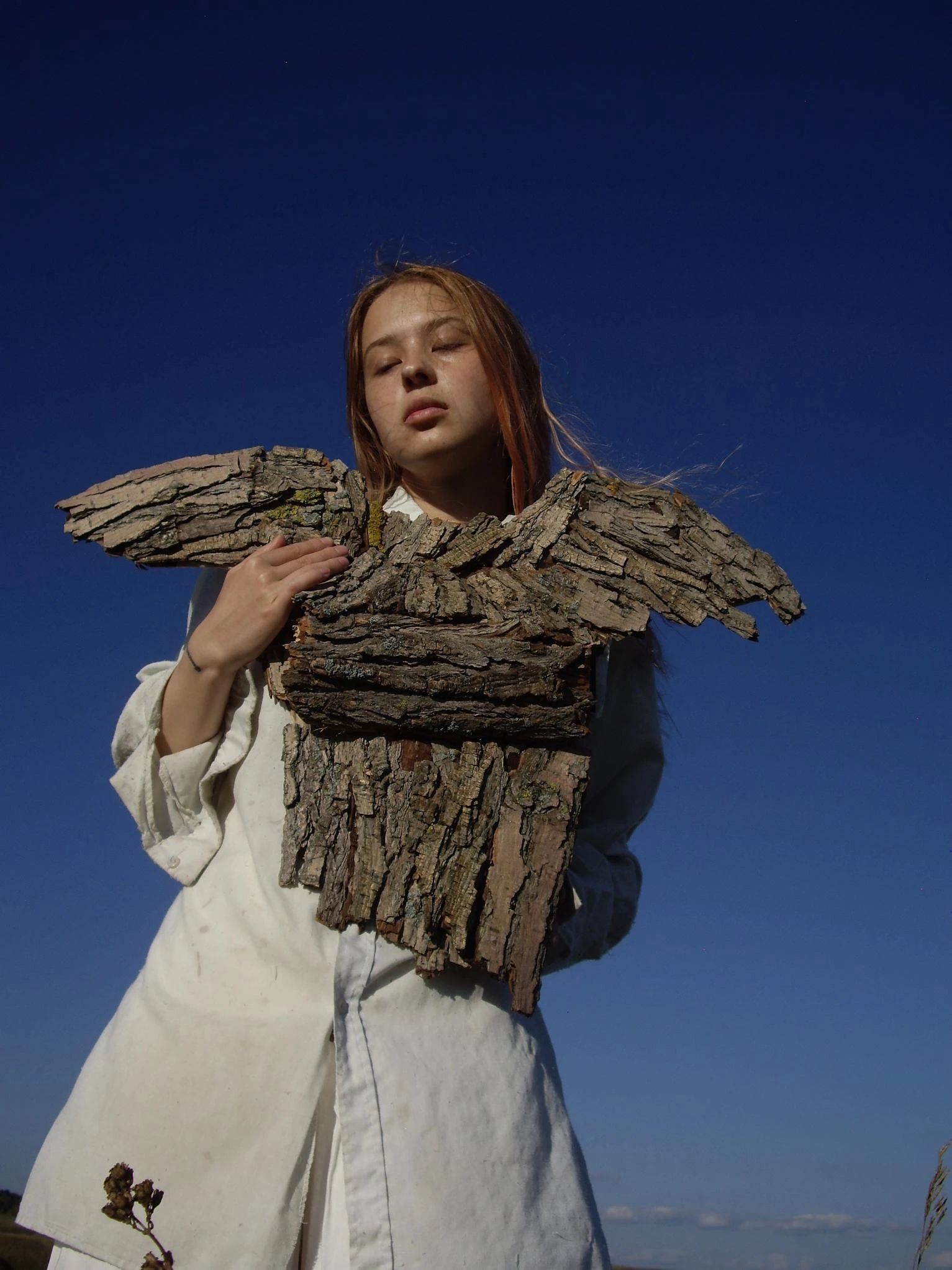
- Date
- 27 APRIL 2025
- Author
- MIRA WANDERLUST
- Image by
- POLINA OSIPOVA
- Categories
- Interviews
The Alchemy of Myths: In conversation with Polina Osipova
The art of storytelling remains a profound testament to the human experience, often rooted in ancestral traditions and cultural heritage. This is precisely where Polina Osipova thrives. Born in 1998 in Cheboksary, Russia, Polina's artistic practice serves as a bridge between the rich background of Indigenous Chuvash legends and the innovative possibilities of modern craft. Her work invites us to explore the delicate interplay between the past and present, weaving together stories that resonate through time.
Polina’s approach is deeply personal and reflective, drawing inspiration from the expertise of her female ancestors and their cultural narratives. Through intricate textiles and archival family photos, she creates artworks that function as both wearable sculptures and portals into a digital mythology. Her practice is a unique alchemy of craft and technology, where each piece tells an untold story, blurring the lines between tradition and innovation.
Using mediums that include textile sculpture, performance, and photography, Polina's work embodies a fusion of aesthetics and meaning. She employs her signature gel technique to transfer family memories onto fabric, creating artifacts that evoke a sense of nostalgia while simultaneously challenging contemporary artistic expressions. By forgoing traditional sketches, she immerses herself directly in her materials, intuitively crafting shapes that resonate with the ancient meanings hidden within Chuvash myths.
In this interview, we explore Polina's creative process, how she transforms rich Indigenous narratives into modern expressions through her art. We discuss her unique methodology, the significance of textiles in her work, and how she navigates the realms of memory, culture, and personal identity in an increasingly digital age. Join us as we uncover the layers of Polina Osipova's artistry and the compelling stories that rise from this intersection of craft, mythology, and contemporary life:
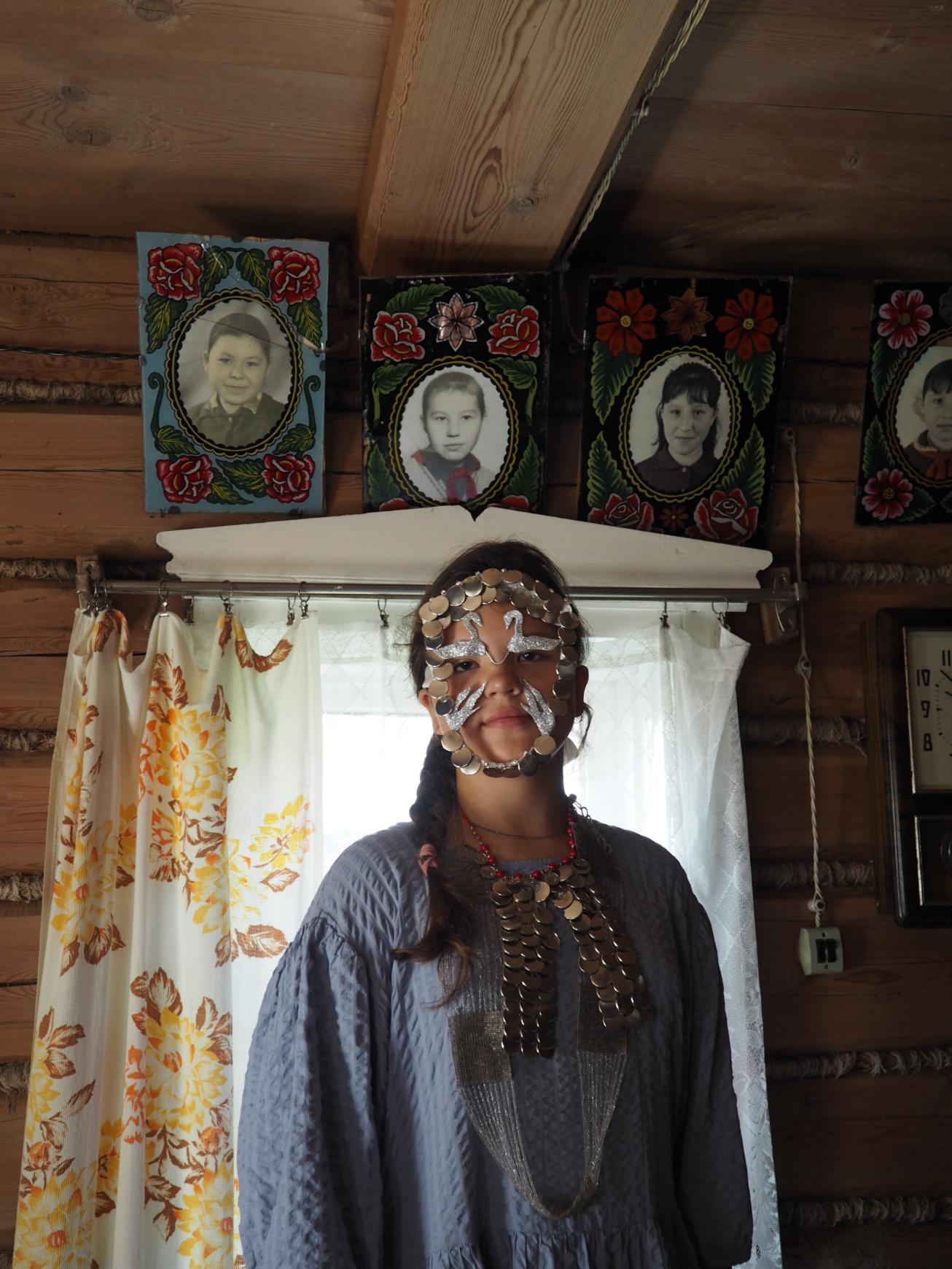
Growing up in the Chuvash Republic, a place rich in tradition yet often overshadowed by larger narratives, how has your Chuvash heritage shaped your understanding of identity? Can you talk about specific experiences from your childhood that inform not only your artistic expression but also your personal sense of self within a post-colonial context?
Chuvash soil is very fertile and you, as a young plant, absorb it like a sponge. The wind around here is very strong and you as a young plants are very fragile, so the roots must be strong. Minerals, air molecules, salts and other nutrients from the Chuvash land make up you.
From the witch charms my grandmother used to make on me, to the obsession with banya (like sauna, but wet). One of my favourite holidays is the cemetery party. It's a lot of fun and I look forward to it every year. When every grave is set up as a festive table and the whole village celebrates and goes to visit each other at other relatives graves. Grandmother and aunts prepare a festive table in advance: pies, Chuvash dumplings with salted cottage cheese and green onions, homemade infusions . After the feast, people leave some of the food on the grave at the tombstone so that the buried person could have a treat too. All the distant relatives come, and pop music is played from the boots of cars parked near the cemetery.
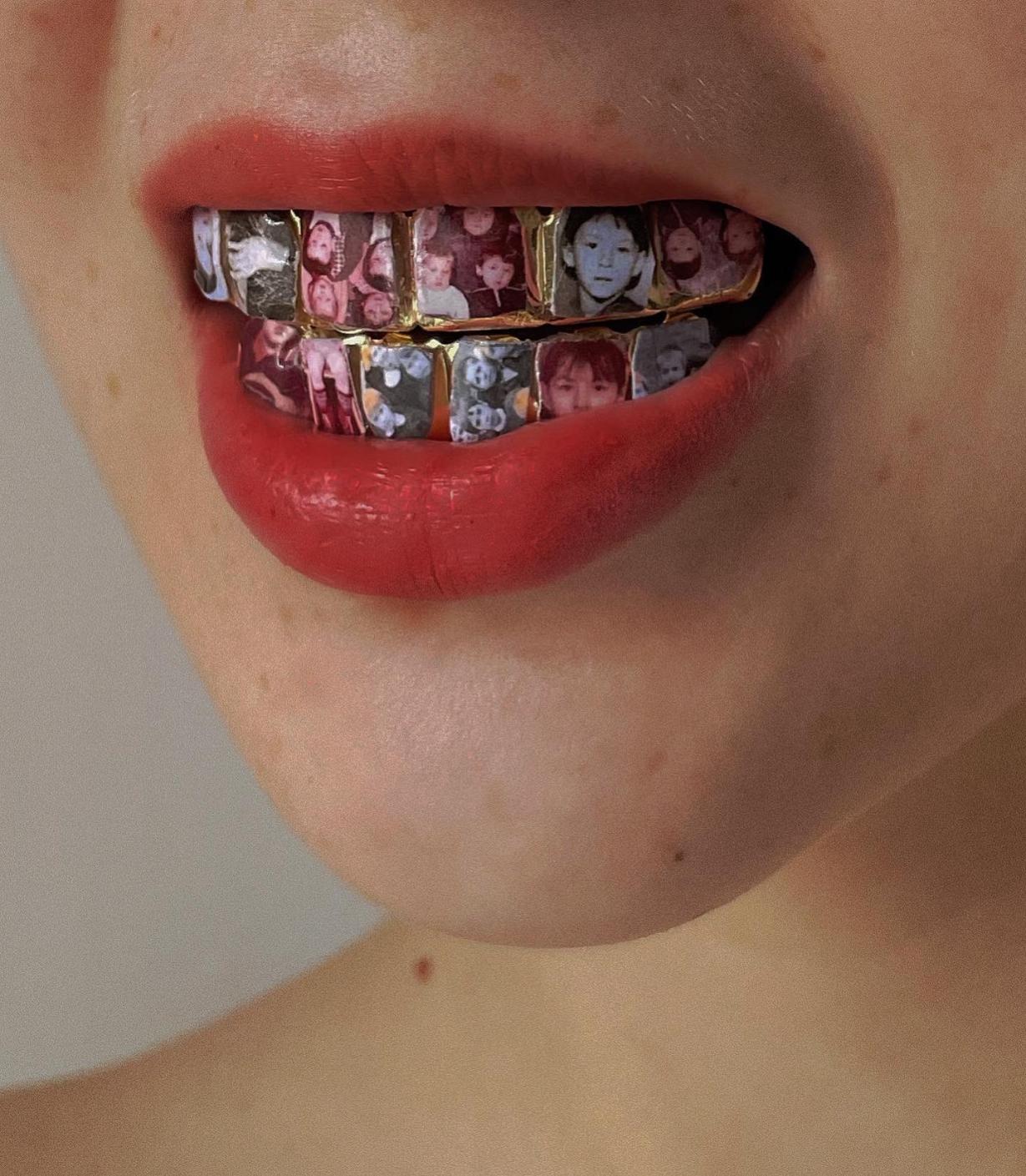
You mentioned that embroidery and needlework techniques were passed down through generations among Chuvash women and felt as natural as breathing. How do you view these traditional skills in today’s context? In what ways do you adapt or transform these ancestral practices in your art, and how does that serve as both a homage and a reimagining of your cultural legacy?
Applied arts for me stand in opposition to the seemingly patriarchal and institutionalised practices taught at university. I think that textiles as a traditionally female occupation envelops all sharp objects that hit it and absorb them. Invisibility is a very important point, and it seems women also devalue this labor because of this pressure. Now especially with the growth of AI, I see it as a counteraction, I want to feel the warmth of the hands that did this or that thing. When I repeat the same stitches in my work as my great-great grandmother did who sewed her dress without being able to buy it, that is the magic, in the same movement of the hands through the ages.

You’ve highlighted your teenage decision to embrace your Chuvash identity as a form of rebellion against societal pressures to conform to a Russian identity. Can you delve deeper into the relationship between your art and activism? How do you see your work as contributing to a larger conversation about cultural preservation, resistance, and identity politics in contemporary society?
My first Chuvash works were, among other things, a rethinking of the Chuvash identity that the Soviet Union gave us. When I started making, no one in Russia was interested in it and I had to fight a lot each time to be called a Chuvash artist in Russian media, even in Russian Vogue. At that time, it was already a protest and a challenge to build your artistic narrative from Chuvash and to call yourself a Chuvash. In the West, meanwhile, there was interest in my Chuvash works, because few people knew that Russia was home to more than ethnic Russians and it seemed exotic to Western audiences. But there is a big problem: despite my positioning, Western institutions will still treat me as an artist from Russia, which strikes me as discriminatory. I still lost a lot of projects because I am from Russia. It's a vicious circle. Although sometimes I think that it is precisely because my work was first shown in London and not in Russia that a new revival of culture and art in Chuvashia began. I have succeeded in planting seeds of hope in other young souls, and if this is true, then this is my greatest achievement. It is still a resistance, it's just that now I am not alone.
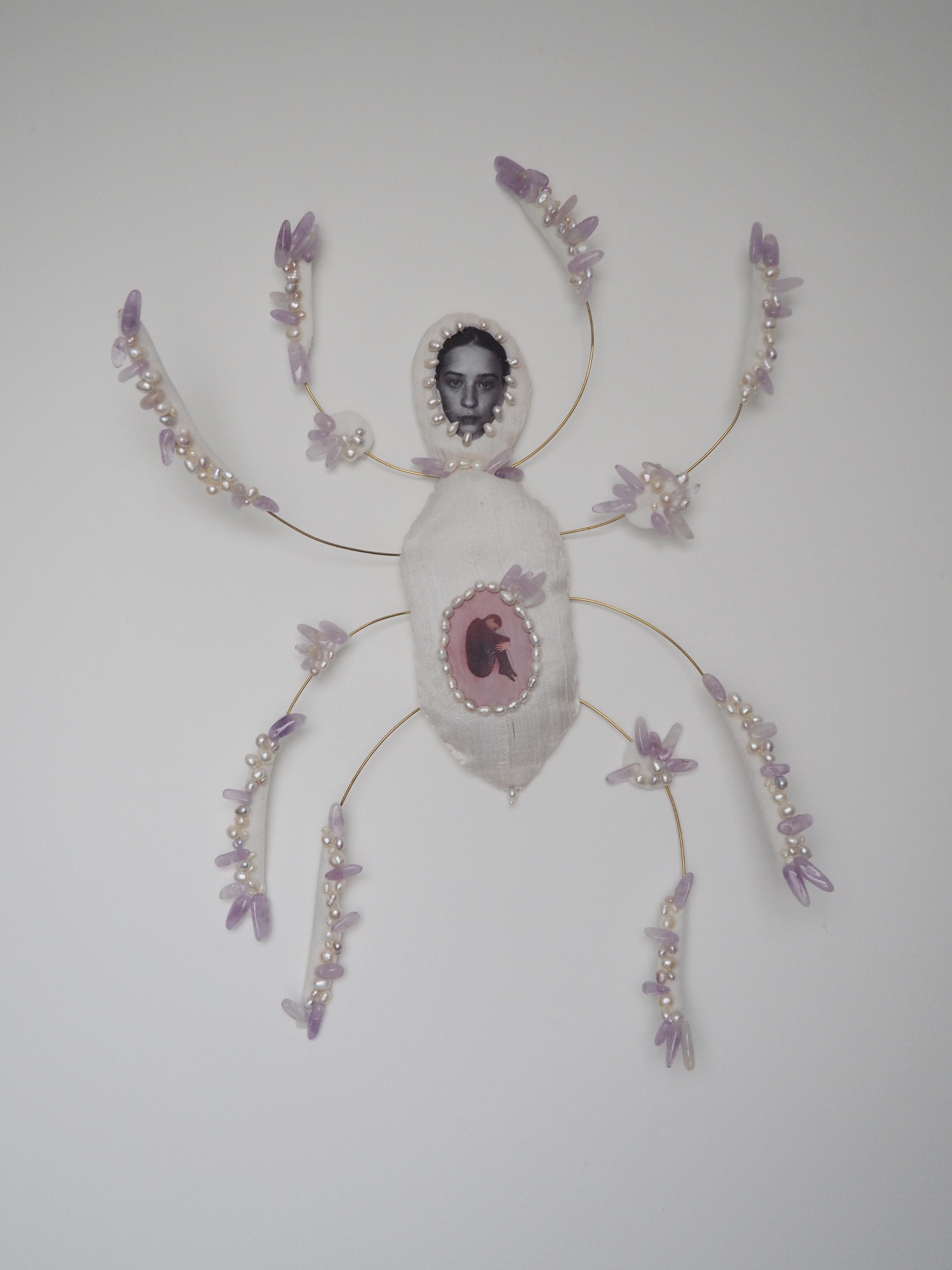
Regarding the symbolism in your work, your reinterpretation of the traditional Kokoshnik headdress, layered with contemporary symbols like surveillance cameras and mobile devices, is both striking and thought-provoking. What led you to create this particular piece, and how do you see it reflecting the tensions between tradition and modernity? Could you elaborate on the layers of meaning you intended to convey regarding societal surveillance and cultural identity?
This is about my 2019 work, one of the first I created. It was the embodiment of my perception of Russia at the time. I can't say what it would be now, because I didn't think about it in that context anymore. This work was a very clear symbol that resonated in the hearts of many, which is why it launched my career. I was 21 years old. On the surface: the contrast between the traditional and the modern, cameras recognizing the faces that are growing like mushrooms after the rain in the big cities of Russia. This work was like a visual poster, clear without words, it had a life of its own, spiralling in popularity during protests and arrests and fading in the quieter months.

You weave narratives into your art that reflect both the history and the modern realities of your people. Can you describe your approach to storytelling within your artworks? How do you select the artefacts and talismans you incorporate, and what significance do they hold in conveying the experiences and struggles of the Chuvash community through time?
As I have no formal education, my narrative experience is very autobiographical and intuitive. talismans and artefacts are portals . Through them I am more comfortable working with archival family photos or home textiles, trying to catch the passing of time. I like to swim in the layers of time, hopefully the current will not carry me away. I have always been fascinated by these threads between the past and the future, as in the homespun cloth my great-great-grandmother made, on which I used to embroider Chuvash women.
Another important thing is coins. Almost all Chuvash jewellery consists of coins. Also coins were buried in the roots of sacred trees - Keremet. Now among treasure hunters in Russia there is a term "Keremetschik" so they call people who specialise in searching and plundering exactly Chuvash sacred burials of coins. My grandmother told me how as a child she used to play with these silver coins with holes. And I was also told how in the 90s people from Moscow came to buy antique jewellery for a bottle of vodka. It's silver, but it's very fragile in the context of our life.
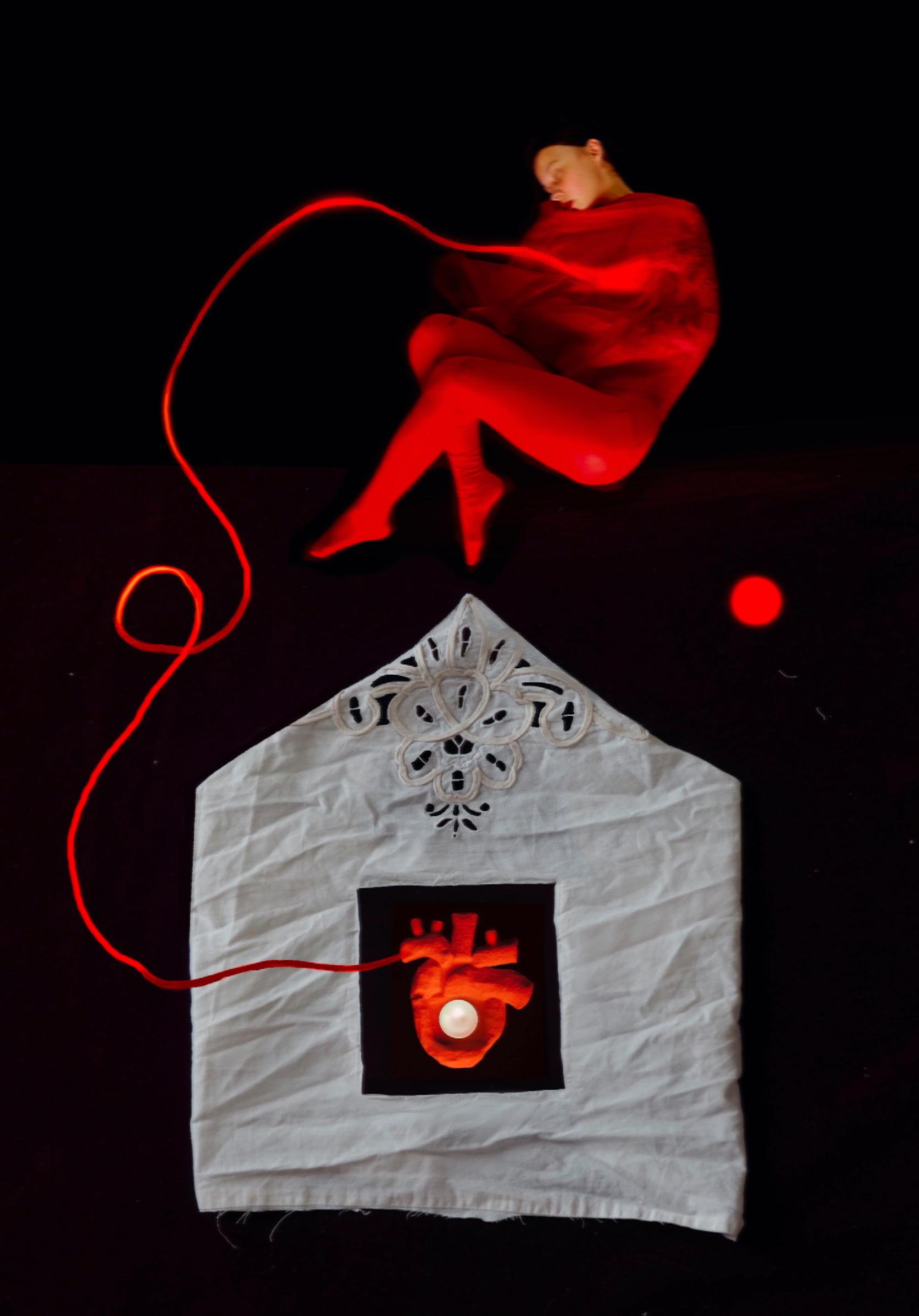
The powerful presence of your ancestors, especially your grandmothers and great-grandmothers, is a central theme in your work. How do their stories and experiences inspire your artistic creations? Can you share specific memories or lessons from them that resonate in the themes you explore, as well as how you interpret their legacy in the contemporary context?
The voice of my female ancestors is constantly echoing in my head, and I find it difficult to separate myself from their shadows and echoes. I write down the phrases they said and the phrases they casually dropped into my notes. My grandmother said last summer: "I told my whole life to a cow".
I spent a long time thinking about this phrase and the role cows played in her life, creating a self-portrait in the embryo pose in a cow's belly.
While exploring your culture through art, you also highlight the enduring limitations faced by the Chuvash people today. In what ways do you address these contemporary challenges within your pieces? How do you find a balance between acknowledging past struggles and celebrating resilience and hope for future generations in your work?
In my worldview, all these bright streams in the history of my people were in spite of it. And from this they are stronger, and from this they give hope. I cannot separate this, because everything is interconnected.
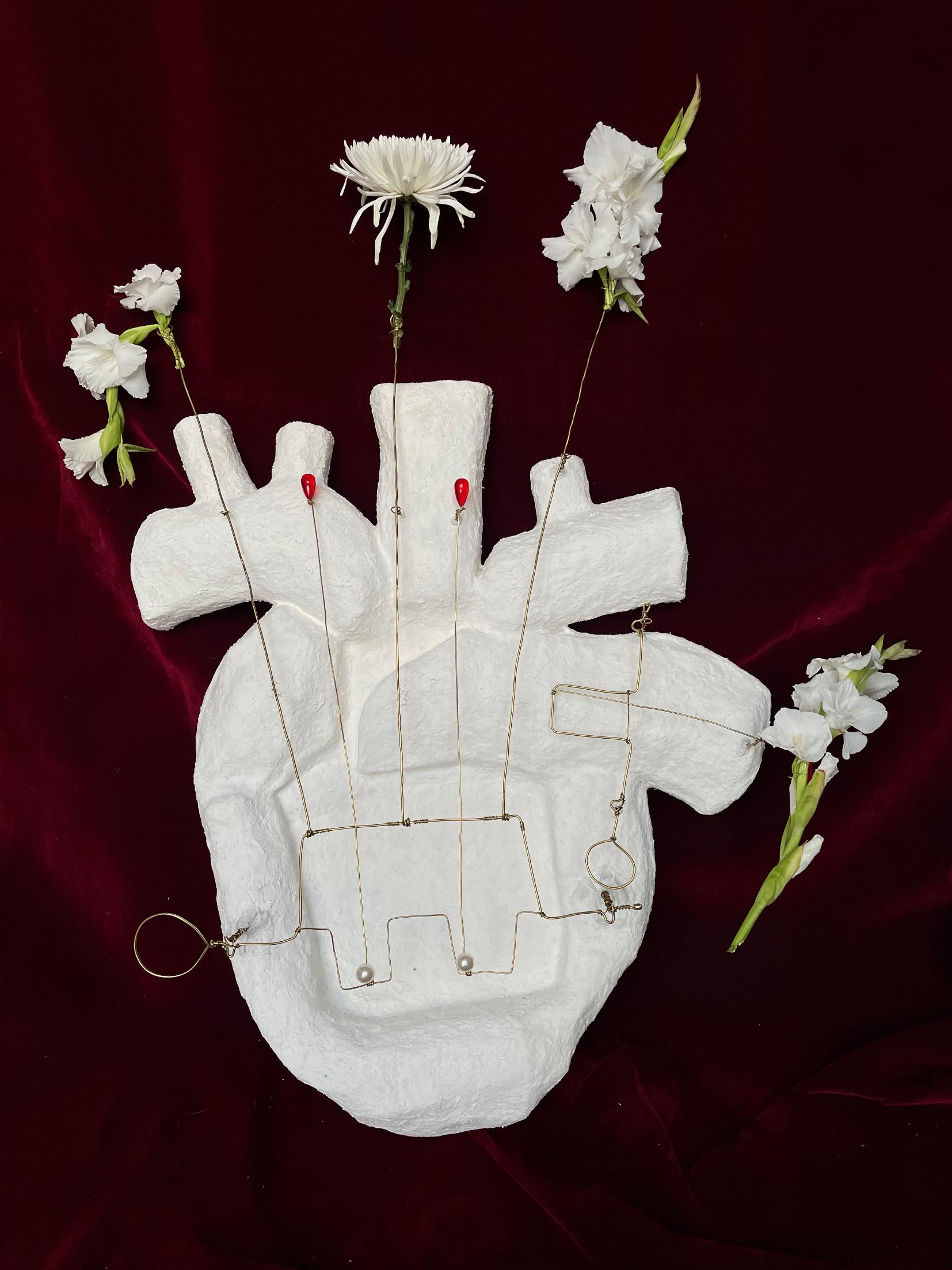
Your collaboration with Gucci has drawn significant attention to your work. As a young artist steeped in cultural traditions, how do you navigate the complexities of merging commercial fashion collaboration with your artistic integrity? What challenges do you face, and how do you maintain your voice and vision amidst the often commercialized art world?
I never had any intention of doing this, it just happened.I was very insecure legally and young when I started, I had an experience when I did work with a friend for a very big Fashion brand on the Met Gala and one of the most famous rappers , and as soon as they got my work they stopped responding and I was never paid. So I don't rent my work anymore, only if I am called as a full member of the team like a set designer or creative director.
I'm grateful that I had these commercial collaborations, especially when Gucci discovered me when I was 21, they really supported me. It enabled me to save up the money to move out of Russia when the war broke out. I used that money to make the work that I really wanted to make, it’s very important. But I decided to change my approach now , and to offer brands an idea that I already had and ask them to support it. For example, now I am looking to support a series of video performances that need a bigger budget.
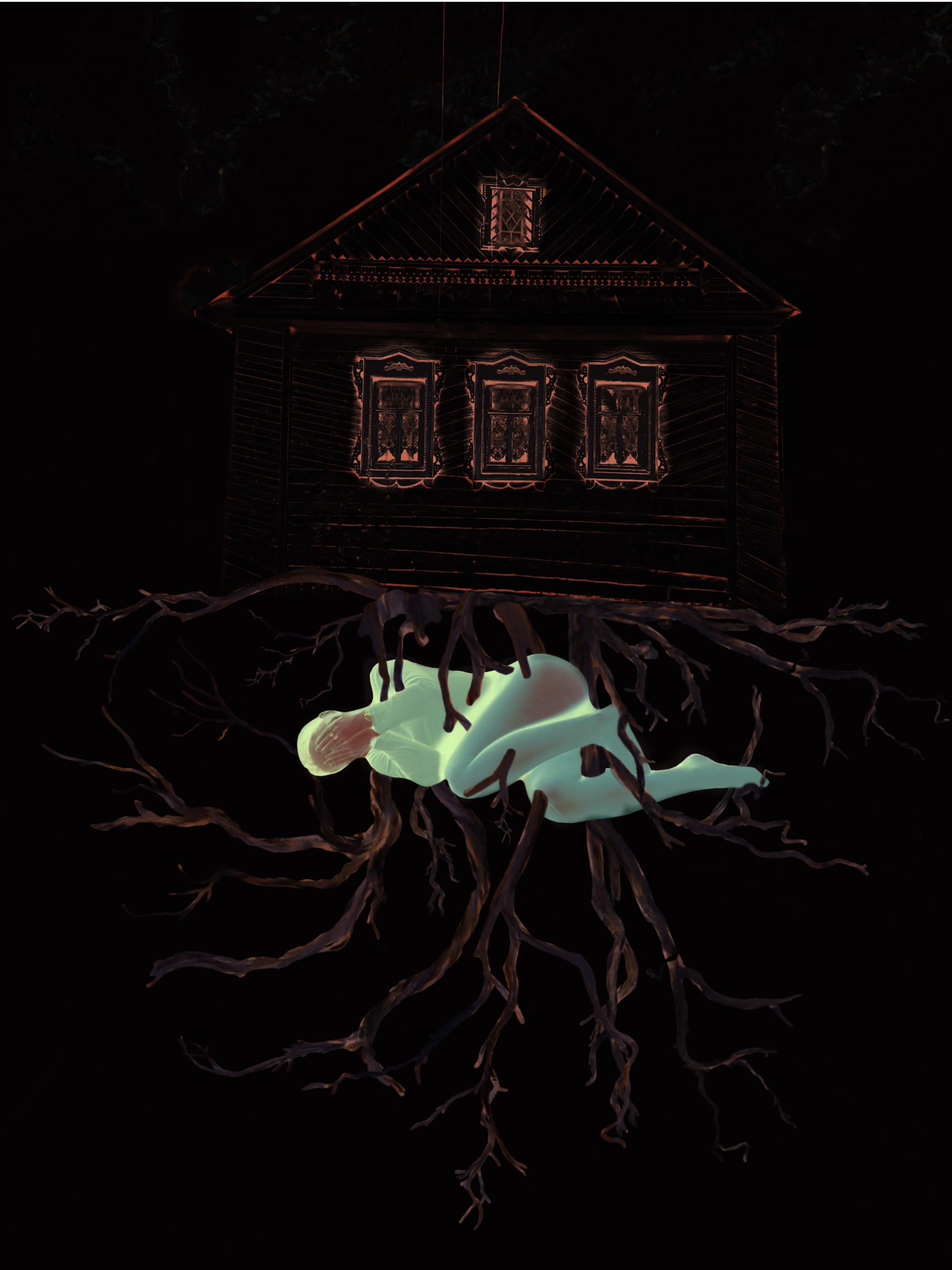
In an era marked by rapid technological change, many of your pieces address themes of surveillance and identity. How do you perceive the interplay between modern technology and cultural heritage? In what ways do you see technology both threatening and enriching cultural expression, particularly in your own work that bridges traditional craftsmanship with contemporary issues?
I can specifically talk about artificial intelligence. Because it's very accessible and you can create anything with it, I think a lot of ethnic artists don't delve into the layers of meaning that a particular thing carries in their culture, because you can simply ask AI to draw something in a certain style. I think that's how identity and traditional culture is erased, because you don't have to learn how to carve bone anymore, you can ask them to make a 3D model and print it on a 3D printer.
I don't see much point in speculating about the pros, I think they are obvious. The same availability of information and mass production can be both good and bad, depending on whose hands it is in.
As you prepare for your upcoming exhibition and contemplate the next stages in your artistic journey, what themes are you most eager to explore further? Looking ahead, how do you envision your role as an artist evolving in relation to cultural discourse, and what legacy do you hope to create that reflects not just your own journey, but the collective narratives of your people for generations to come?
I think my themes will remain the same, because it's already quite a broad range. But I want to scale my work, to collaborate more with people. I plan to make a mini film about Chuvash women in the future. This will require a large team, and I will try to involve these people in its creation, thus establishing horizontal links between us and the possibility of leaving a trace for future generations.

Interview by @mirawanderlust